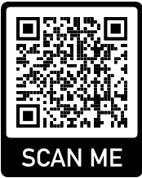Edwards AFB COVID-19 Vaccine Center
What: Comirnaty (Pfizer/BioNTech) Fact Sheet: www.cvdvaccine.com 
•Primary Series (2 doses) – for all 12 and older
•3rd dose (28 days after 2nd dose) – for Immunocompromised
•Booster dose (6 mo after final dose)–
•For anyone 65 and older
•For 18-65 y.o. with high risk medical condition or high risk for exposure
•Pediatric doses (5-11 y.o.) – pending, will be available via primary care provider
Where: Main MDG campus, Bldg 5525, 30 Nightingale Road
When: By appointment. Sign up at https://health.mil/dap.html
•Walk in available during operating hours
Who: All AD/Beneficiaries/DoD & NAF Employees
OFF-BASE: Free and readily available to everyone at all pharmacies/vaccine centers
•To find a location near you: Text your ZIP CODE to GETVAX (438829) or VACUNA (822862)
•Or visit Vaccines.gov or Myturn.ca.gov
•For AD/Reservists/Beneficiaries – bring in documentation to Vaccine Center or email it to
usaf.edwards.412-mdg.list.covid-clinic@mail.mil